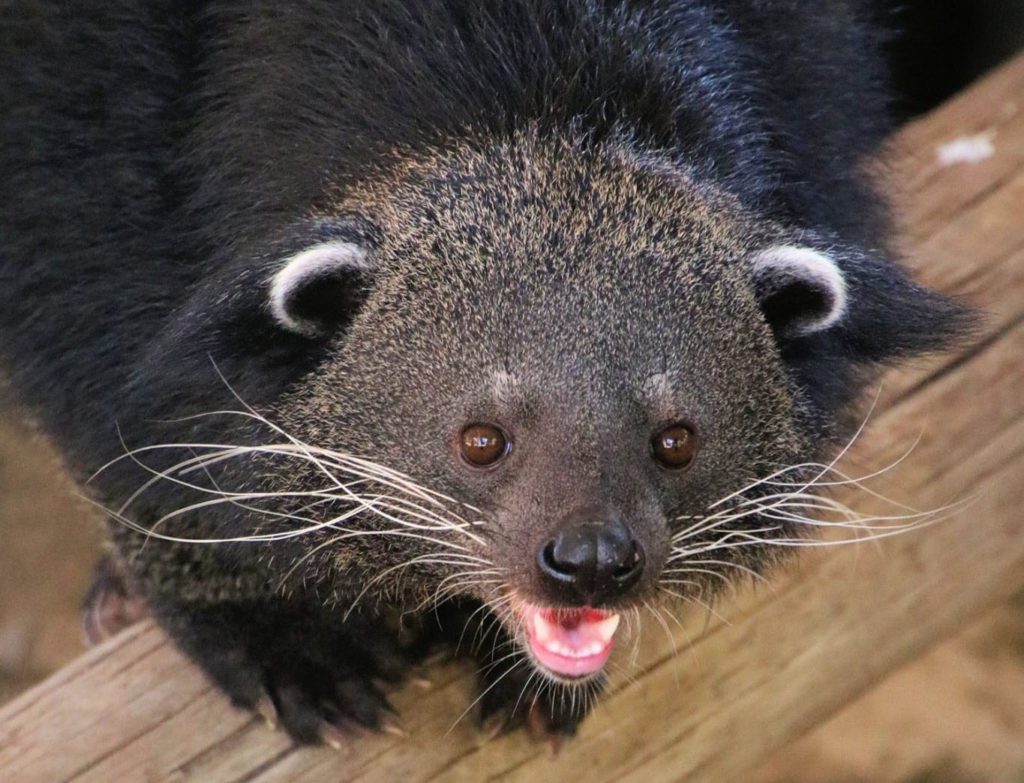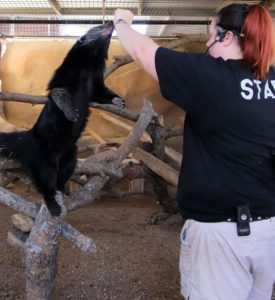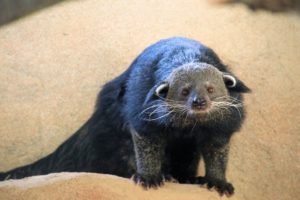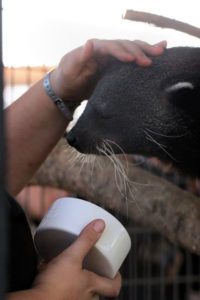Animal World & Snake Farm Zoo’s featured animal for January is the Binturong. We sat down with Mammal Keeper, Annie Kennedy, to talk about these amazing creatures, and answer some questions submitted by our Facebook and Instagram followers.
Before we get started talking about Binturongs, tell our readers a little bit about you.I’ve been at Animal World & Snake Farm Zoo for about 8 months now, but I’ve wanted to work with animals for as long as I can remember. I went to college at A&M Corpus Christi. During my time there, I worked as an animal rehabber at the Texas Sealife Center. I also interned at the Cheyenne Mountain Zoo. After my internship, I went on to become a Keeper Assistant and was a Roaming Keeper for about 2 years. That was awesome because I got to work with everything from wallabies to rhinos to hippos and even bears. |
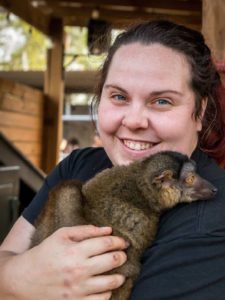 |
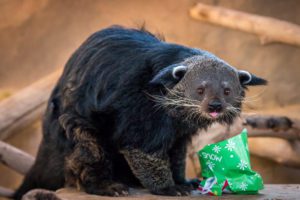 |
Can you tell us a little about the binturong we have here at the Zoo?
|
What does daily care for Brighten the binturong look like?When I first arrive in the morning, I go and check on her, give her a once over and make sure she doesn’t have any scrapes or scratches or anything like that. She typically spends the night in her indoor exhibit, so while she’s still hanging out inside, I go and clean her outdoor exhibit and make sure that everything is good to go for her to spend the day out there. After cleaning is done, we ask her to go into her crate so that we can take her outside for the day. Once she’s in the crate, she gets a banana as a reward. Because she loves bananas so much and is very food-motivated, it was pretty easy for us to crate train her when she first arrived at the Zoo. We then take her outside and get her set up for the day. She hangs out in her outdoor exhibit for the majority of the day, as long as the weather is warm enough. Because binturongs are from a warmer climate than Texas, they don’t tolerate super cold temperatures well, which is why she has both an indoor and outdoor exhibit. If Brighten is outside for the day, we’ll often feature her during one of our Little Safari shows. During the shows I’ll go into her exhibit with her and have her show off her awesome climbing skills. She also receives some yummy treats as we teach guests about these cool critters. She’s a bit of a diva, so she loves being the center of attention. |
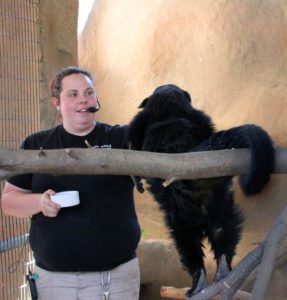
|
|
|
Speaking of treats, what do binturongs eat?Technically they are part of the order Carnivora, but they eat a little bit of everything. Brighten is unique in that she actually enjoys her veggies. Most binturongs prefer fruit, but Brighten likes vegetables just as much as fruit. Except broccoli and celery. She’s not a fan of either of those vegetables. |
Facebook user Jacy asks, “Do they really smell like popcorn?”Believe it or not, yes! It’s actually their urine that smells like buttered popcorn. It’s basically When they get excited or nervous, they have a hormone that goes kinda crazy and makes them smell like popcorn. Instagram user Hannah asks, “How big can binturongs get?”Adult binturongs can weigh anywhere from 30 – 50 pounds. From nose to tail they can be as long as 5 feet! Brighten is on the petite side, weighing in closer to 35 pounds. |
|
|
|
What’s your favorite thing about working with binturongs?Brighten is the first binturong I’ve ever worked with. I love learning her personality. She’s so outgoing and smart. I love watching her problem solve and think about things in new ways. She can also be a little ornery sometimes. I also like getting to teach people about these incredible creatures during the shows. They are a keystone species, which means they are critical to the ecosystem they are native to (Southeast Asia). Like the keystone of a bridge, if you remove binturongs from their natural habitat, the ecosystem would collapse. That’s because they are one of the only animals that is able to digest the seed coat of the strangler fig fruit, which enables the plant to grow. The strangler fig is what comprises the majority of the canopy layer of the rainforest, which is where most of the animals in the rainforest live. |

